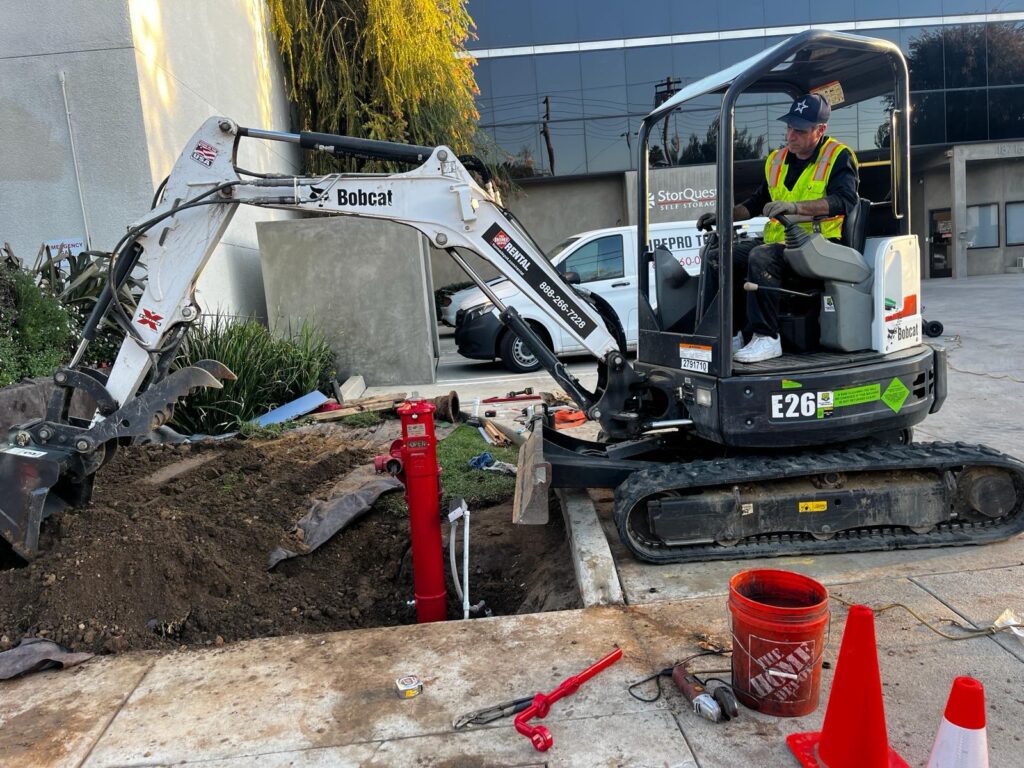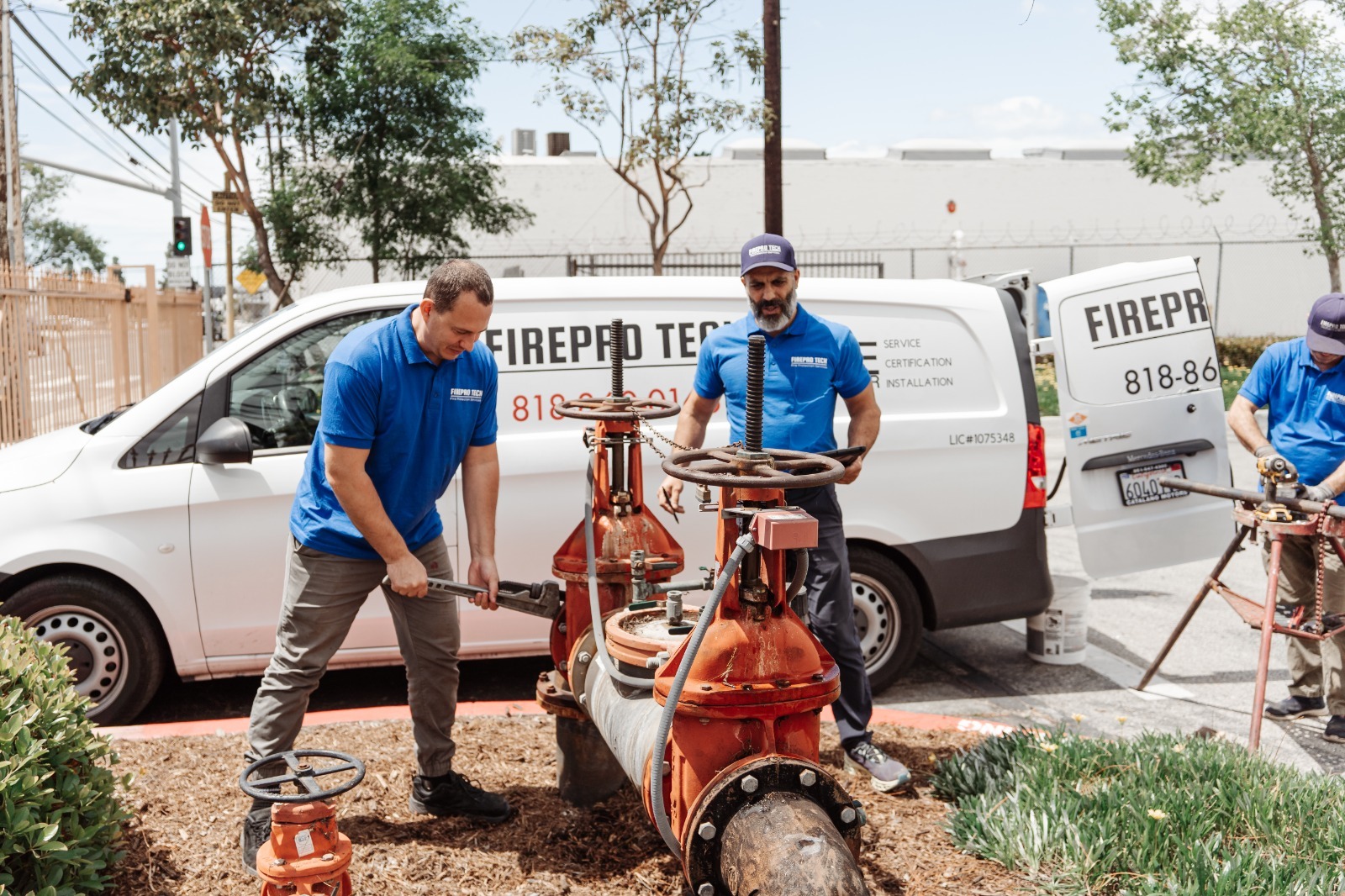Getting in touch with fire safety is always bonded with fire protection systems. And since every building has its own character, there are different types of sprinkler systems. Depending on risks you might face in case of fire, these systems are designed to fit different needs. We share this article so you can plan your fire protection easily.
Types of Fire Sprinkler Systems: Key Differences
Before talking about each system, let’s have a look at it shortly. Most commonly used different types of sprinkler systems are:
Wet Pipe Systems
Pipes always contain water and discharge immediately when triggered.
Dry Pipe Systems
Filled with compressed air or nitrogen; delay water release until needed.
Pre-Action Systems
Require a two-step activation (e.g., heat and smoke detection).
Deluge Systems
Simultaneously discharge water from all open heads.
Foam-Water Systems
This system uses foamed water to deal with chemical and flammable liquid fires.
Water Mist Systems
Uses fine droplets to suppress fire with minimal water damage.
It might be hard to choose a system from the first glance. Make this decision based on your property’s climate, usage, and fire hazard level.
How Fire Sprinkler Systems Work
Despite all differences that types of fire sprinkler system have, they share the same goal. They detect heat and suppress fire. So how fire sprinkler systems work exactly? It all starts with a sprinkler head which is heat-sensitive. Usually it’s a glass bulb or a fusible link. When the set temperature is reached, they break activating the system.
Once activated:
- The sprinkler opens.
- Water (or foam) is released.
- Flames of fire are cooled down by the released steam. It displaces oxygen as well.
Water comes only from those sprinkler heads which were exposed by the fire heat. And that’s how fire sprinkler systems work.
Wet System Sprinkler
A simple and trustful wet system is the most widely used among types of fire sprinkler system. These systems are constantly filled with water, ensuring immediate discharge when a fire is detected.
Best wet system sprinkler is suited for:
- Office buildings.
- Hotels.
- Schools.
- Most heated environments.
Advantages:
- Fastest response time.
- Lower installation and maintenance costs.
- Easy to inspect and test.
Limitations:
- Not ideal for areas exposed to freezing temperatures, as pipes may burst.
Wet VS Dry Sprinkler System
Understanding the difference between a wet vs dry sprinkler system is vital, especially in varying climates. To help you navigate through these types of fire sprinkler system here is a small table:
| Feature | Wet System | Dry System |
| Water in Pipes | Yes | No (air or nitrogen instead) |
| Response Speed | Immediate | Slight delay (few seconds) |
| Climate Suitability | Heated areas | Cold/unheated areas |
| Installation Cost | Lower | Slightly higher |
| Maintenance | Simple | Requires more upkeep |
Key insight on wet vs dry sprinkler system:
Use wet system sprinkler in temperature-controlled areas and dry systems in places like parking garages or warehouses where freezing may occur.

What Is a Dry Fire Sprinkler System
A “dry” regarding fire protection sounds a little weird at first. So what is a dry fire sprinkler system? We have an answer! A dry fire sprinkler system is designed for environments where freezing is a concern. Instead of water, the pipes contain compressed air or nitrogen. When the sprinkler head is exposed to fire the pressured air escapes. That allows the valve to open so the water can flow in.
Common uses:
- Unheated warehouses.
- Loading docks.
- Outdoor structures.
- Attics and garages.
Why does it matter to understand what is a dry fire sprinkler system? The most important reason is no frozen pipes. This ensures fire protection even in extreme cold.
How Does a Dry Sprinkler System Work
If you want to learn how does a dry sprinkler system work here is a quick breakdown:
- Air or nitrogen in some cases keeps water at bay thanks to the pressure. Also this gas ensures valves are closed.
- Heat from fire activates the sprinkler head. This is a stage of fire detection.
- When the system detects the fire, the compressed air exits the pipes.
- The extreme drop in pressure makes the dry pipe valve open.
- Water fills the pipes and discharges only through activated heads.
Compared to a wet system, the water discharge starts a millisecond later then in a dry one. However, in properties with low temperatures it prevents water from freezing and rupture of the pipes. That’s how does a dry sprinkler system work. If you need one, learn about our fire sprinkler installation service.
Pre-Action Sprinkler Systems for High-Risk Environments
There is a great solution for high-risk environments—a pre-action system. The main point of it is that this system has a 2-stage fire detection. These are ideal for environments with sensitive objects like museum exhibits or sophisticated electronic equipment. At such places accidental discharge could cause major damage. Also you don’t have to worry about any break downs of this complicated system since we have comprehensive repair services.
Two types:
- Single interlock: Activates after a smoke or heat detector triggers the system.
- Double interlock: Requires two-step activation before water is released.
Advantages:
- Reduces risk of water damage.
- Ideal for high-value equipment or irreplaceable assets.
- Highly reliable with proper monitoring systems.
Conclusion
When you face so many different types of sprinkler systems, don’t panic. There is your system among them that will suit your property’s features and all safety requirements you have. Whether you have an office, a warehouse, a historical museum or a chemical lab, there are solutions for you.
At FirePro Tech we will be happy to help you build your fire protection. We have trained a team that will help you with wet vs dry sprinkler system comparison or any other system. Simply call your trusted contractor in CA at (818) 860-0166 for superior pre-action fire sprinkler installation. Also follow us on Facebook and Instagram to be updated with the latest fashion in fire protection.

